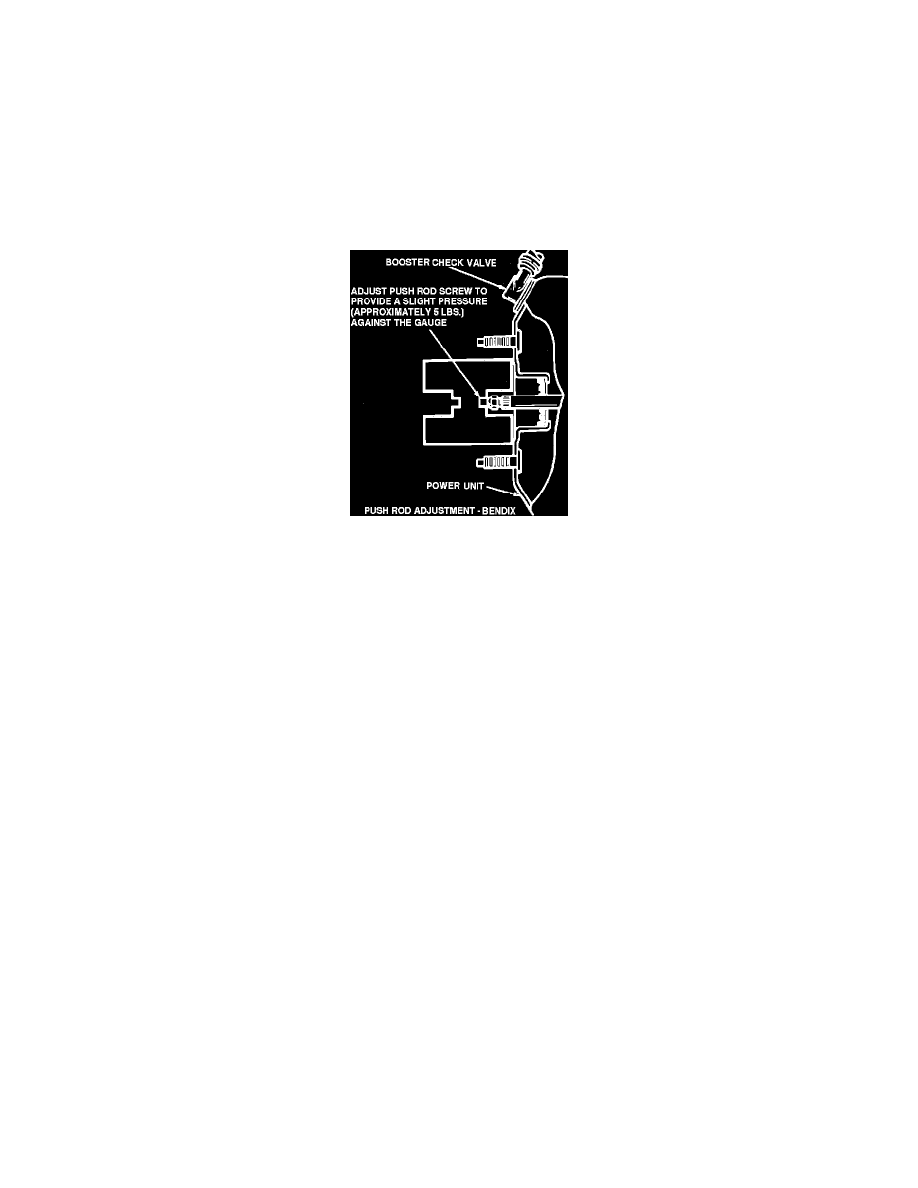Tracer L4-116 1.9L SOHC (1991)

Brake Pedal Assy: Adjustments
Pushrod
Proper adjustment of the master cylinder pushrod is necessary to ensure proper operation of the power brake system. A pushrod that is too long will
prevent the master cylinder piston from completely releasing hydraulic pressure, eventually, causing the brakes to drag. A pushrod that is too short will
cause excessive brake pedal travel and cause groaning noises to come from the booster when the brakes are applied. A properly adjusted pushrod that
remains assembled to the booster with which is was matched during production should not require service adjustment. However, if the booster, master
cylinder or pushrod are serviced, the pushrod may require adjustment.
If the power unit pushrod requires an adjustment the Power Unit Repair Kit for the unit being serviced includes a gauge. The gauge measures from the
end of the pushrod to the power unit shell.
On Capri models, push rod length is not adjustable. To ensure the master cylinder is free to return to its rest position with no residual pressure, verify
stoplamp switch adjustment.
Fig. 1 Master Cylinder Pushrod Adjustment. Bendix Type Vacuum Booster
BENDIX TYPE
1.
Disconnect master cylinder from booster leaving brake lines connected, and secure cylinder to prevent lines from being damaged.
2.
Start engine and operate engine at idle speed.
3.
With engine running, position gauge over pushrod. Gauge should bottom against booster housing with a force of approximately 5 lbs. applied to
pushrod, Fig. 1.
4.
If force required to seat gauge exceeds 5 lb., shorten length of pushrod. If force required to seat gauge is less than 5 lbs., lengthen pushrod. Ensure
that pushrod is properly seated in booster when performing gauge check.
5.
Install master cylinder, then remove reservoir cover.
6.
With engine running, observe fluid surface in reservoir when brakes are applied and released rapidly. If no movement is observed on fluid surface,
pushrod is adjusted too long.
SINGLE DIAPHRAGM BOOSTER
1.
Remove master cylinder as previously outlined.
2.
Position master cylinder gauge T87C-2500-A or equivalent on end of master cylinder.
3.
Loosen set screw and push gauge plunger against bottom of primary piston.
4.
While holding gauge in position, tighten set screw.
5.
Invert gauge and place over brake booster push rod, reading should be 0.
6.
If clearance is not 0, loosen push rod locknut and adjust push rod.
7.
Reverse procedure to install.
